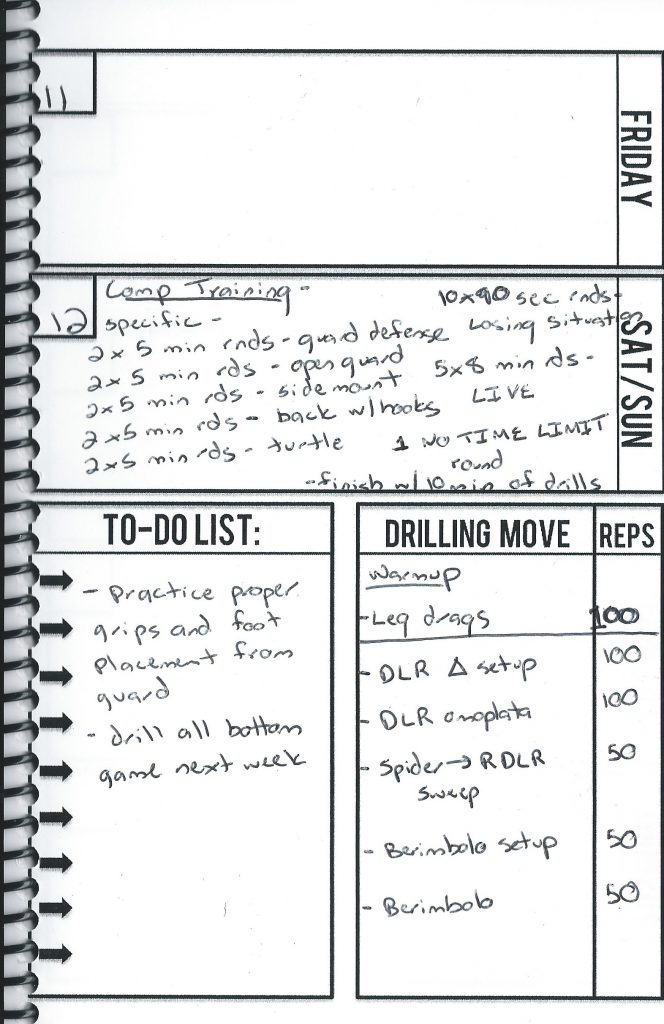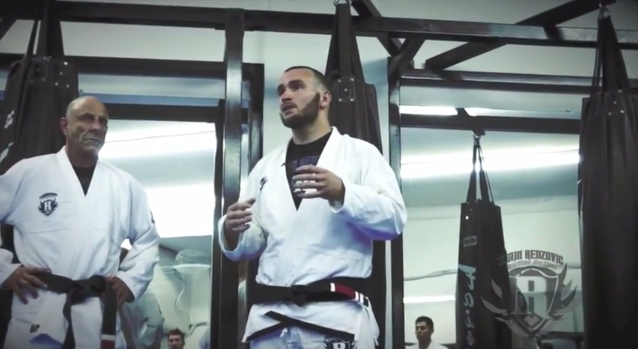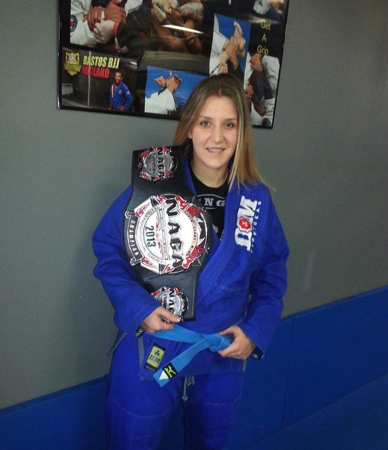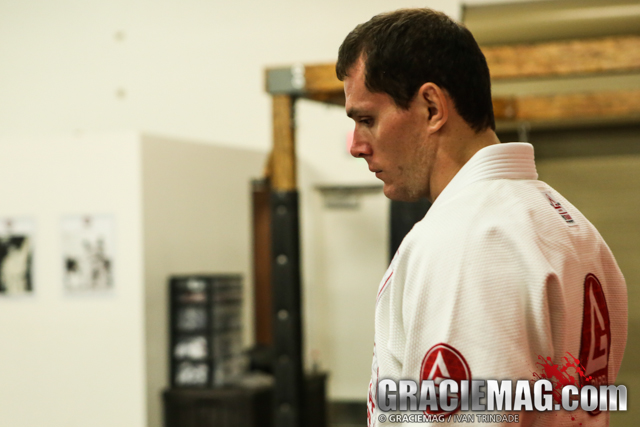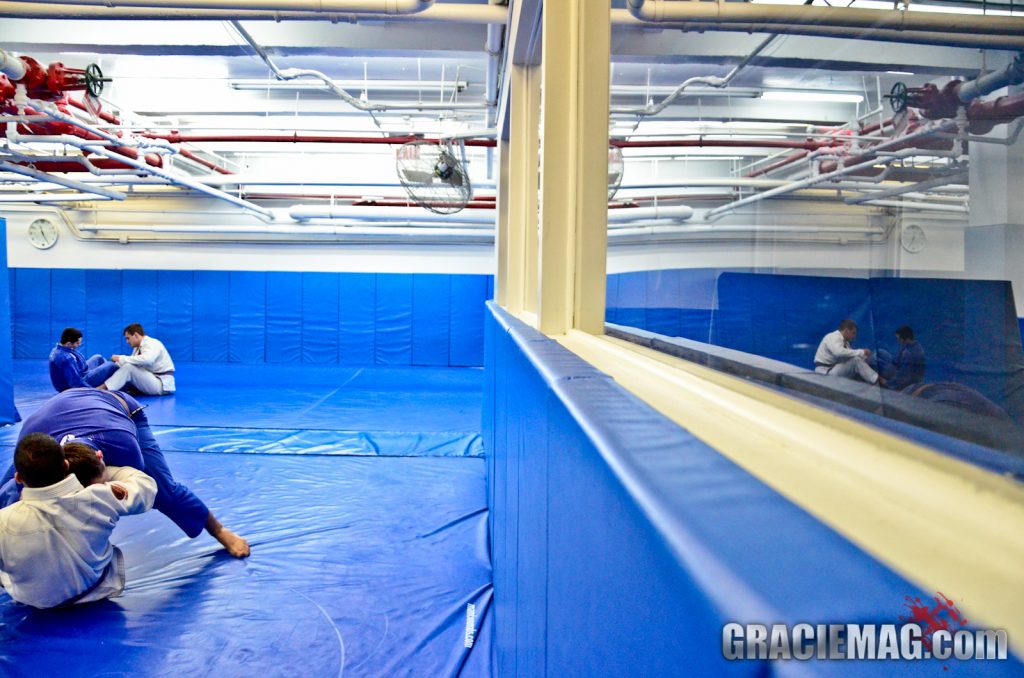
By Erin Herle
[Continued from here.]
Drilling outside of class is like doing your homework. Working on technique, situations, your weaknesses are all important and can be done outside of class. We often don’t allow ourselves to play with weaknesses when training in class and the time allotted for technique is used for a new move, adding to the list of homework assignments to ingrain into your muscle memory.
Now that you have your training partners, the mats to train on and a time to meet up let’s put the timer to use with some lesson plan ideas.
Here are some examples of drills/specific training situations to help you run your class that Gianni Grippo has adjusted through trial and error in his own competition classes at Renzo Gracie Academy NYC:
3-minute rounds of choice drilling
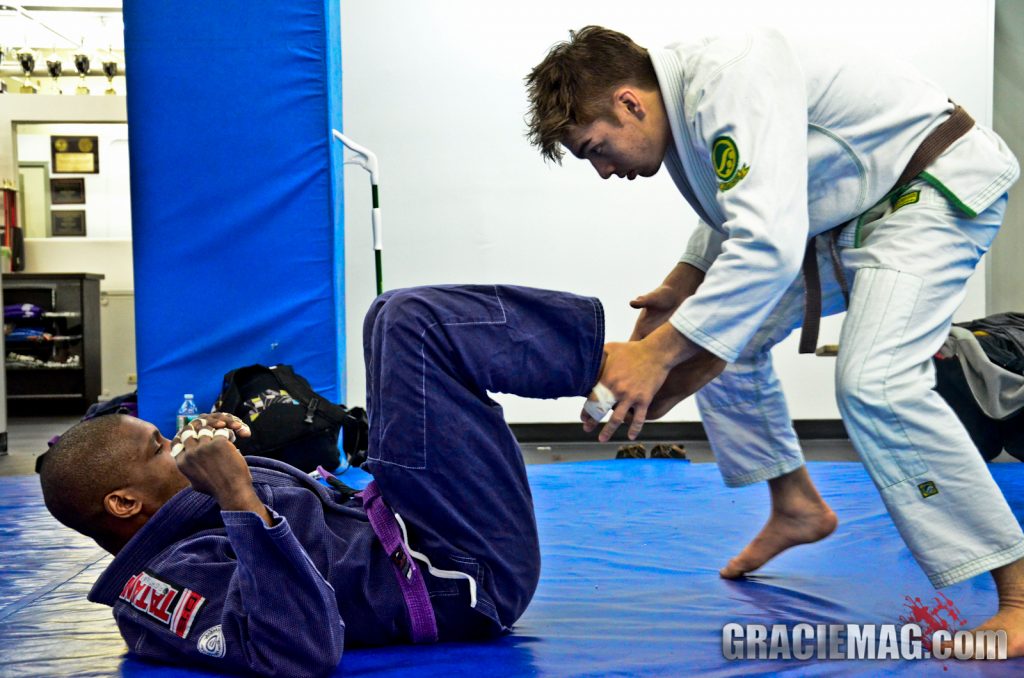
Drilling a guard pass of choice with a partner / Photo by Erin Herle
Every person will pair with someone near their size if possible and drill a move of their choice. SwitchStay with the same move and if you choose to do more rounds with another move, keep them similar. Extend the move into a counter defense move, a submission into another submission and ultimately all bottom game or all top game. It makes it easier to implement and gain many repetitions.
3-minute rounds of chosen drill
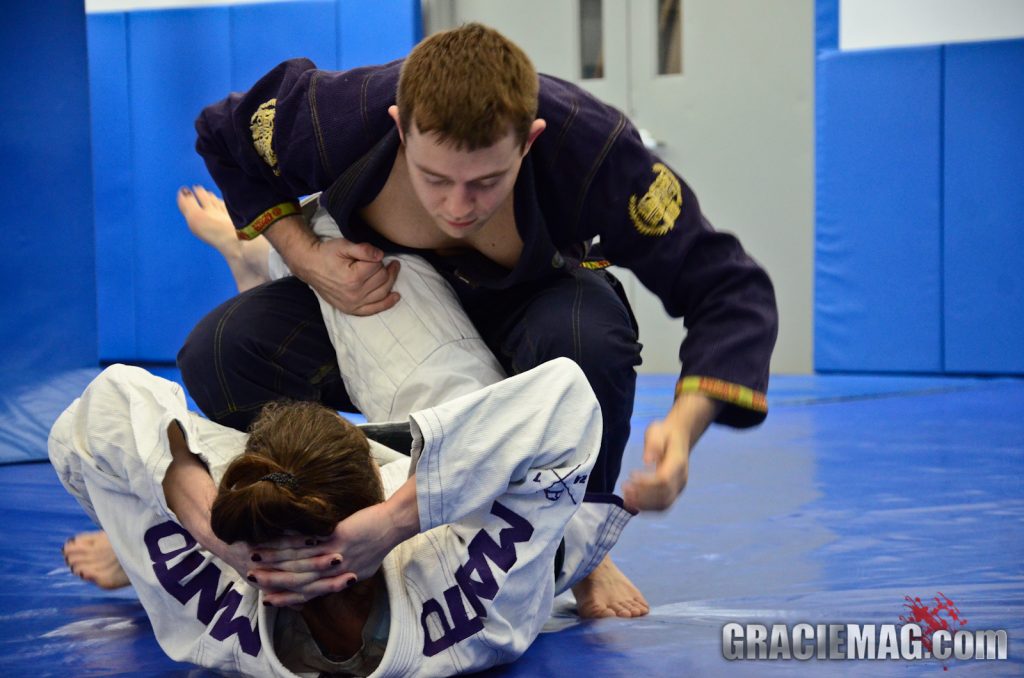
Leg drag drills / Photo by Erin Herle
Dictating the move to drill is a great way to have everyone secure a staple move. This could be a very common move, counter, defense, motion, etc. There are guard passes, guard recovery, positional moves and defensive techniques that everyone must know so using this time to implement these required moves into everyone’s game is beneficial for all. Even if they aren’t fancy and are sometimes even boring, making time for them is important.
5-minute situational sparring
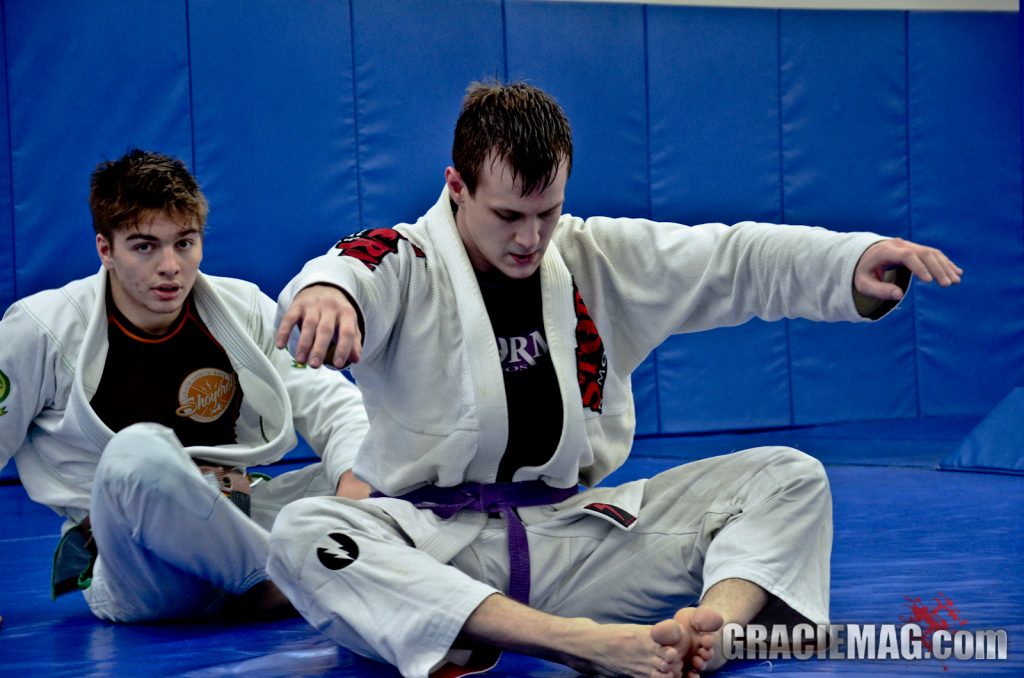
Working situational sparring from the back / Photo by Erin Herle
Training in a position and only that position is a good way to understand the mechanics and leverage of a situation. Being in both top and bottom side control allows both defense, maintenance and offense to improve. Start with a position and state exactly how everyone should start. If you are working on back mount should the person have hooks and a seatbelt grip or should it start from turtle and the person on bottom only needs to recover guard? Focus on who needs to do what, the goal, the grips and rules. When the timer starts, shake hands and roll normal speed within the position and rules. Switch between positions with same partners then switch partners for each round.
5-minute rounds of guard defense
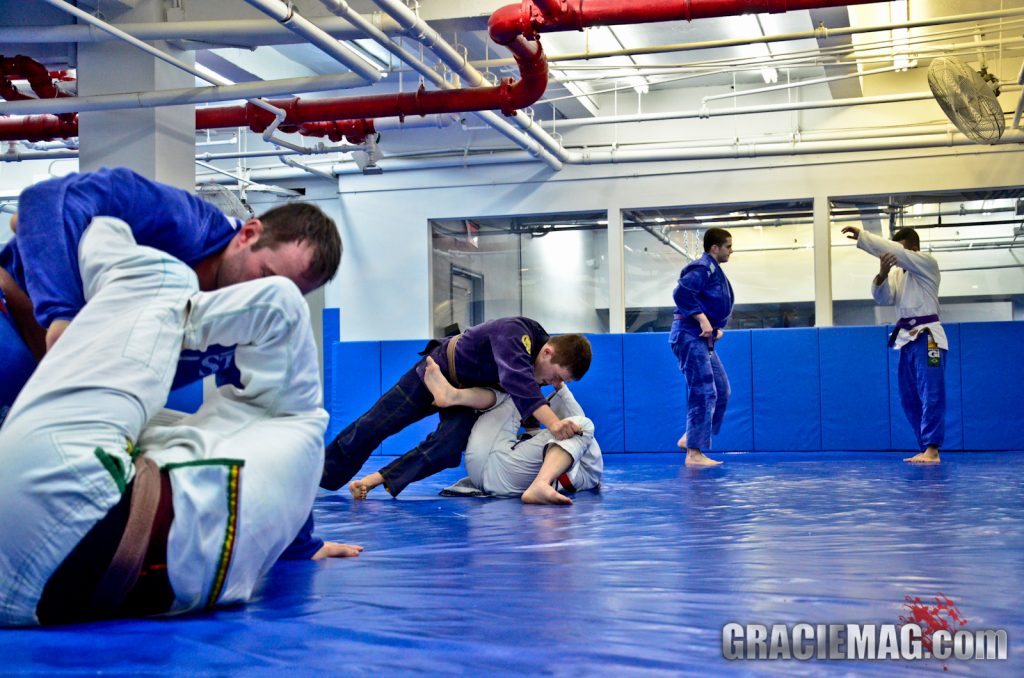
Guard defense rounds with adamant passers / Photo by Erin Herle
The person who plays guard must defend their guard while the person on top tries to pass. The focus of this is guard recovery and defense while the person on top can work their guard passing without the threat of sweeps or submissions. Start with open guard so that the guard player must take what the guard passer gives. If the guard is passed, start over.
90-Second Losing Situation
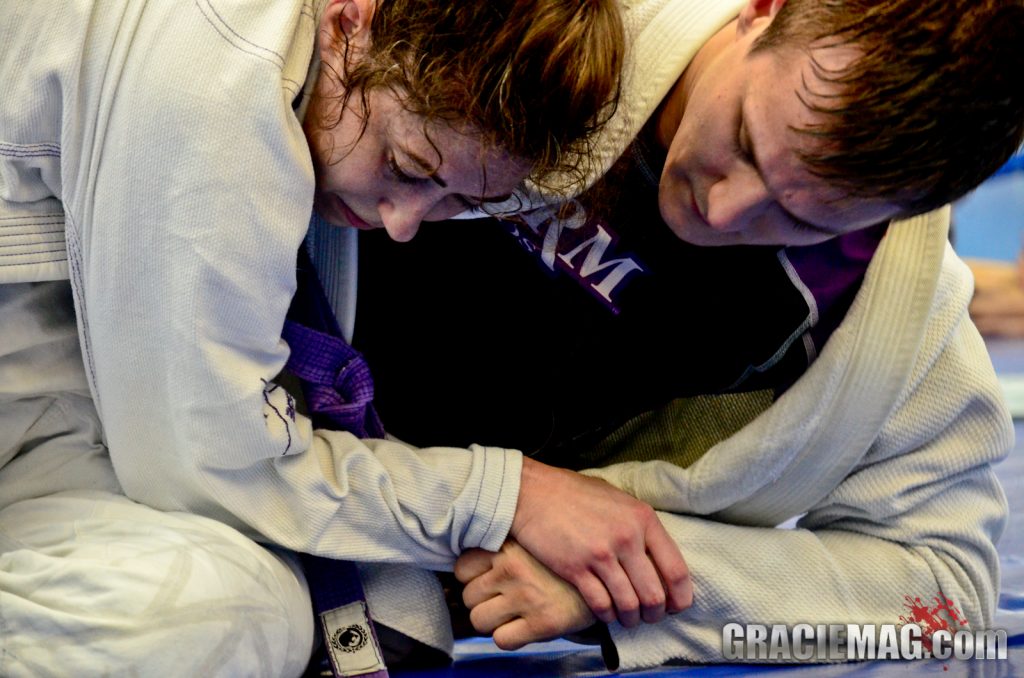
Losing opponent must act quickly / Photo by Erin Herle
Mostly for competition-oriented people, this drill is important for acting quickly yet smart. The person in guard is down on points and must sweep or submit to win the match. With 90 seconds left in a match it can create a type of adrenaline or hastiness that will cause mistakes. With this drill focus on the application of sweeps and submissions and acting quickly when it is most important. The person on top can work the pass like normal but you are forced to play smart and pay attention to your base. If you are winning in a match, you should always keep working instead of stalling but you don’t want to cost yourself the match. Switch partners with this drill.
8-Minute Matches
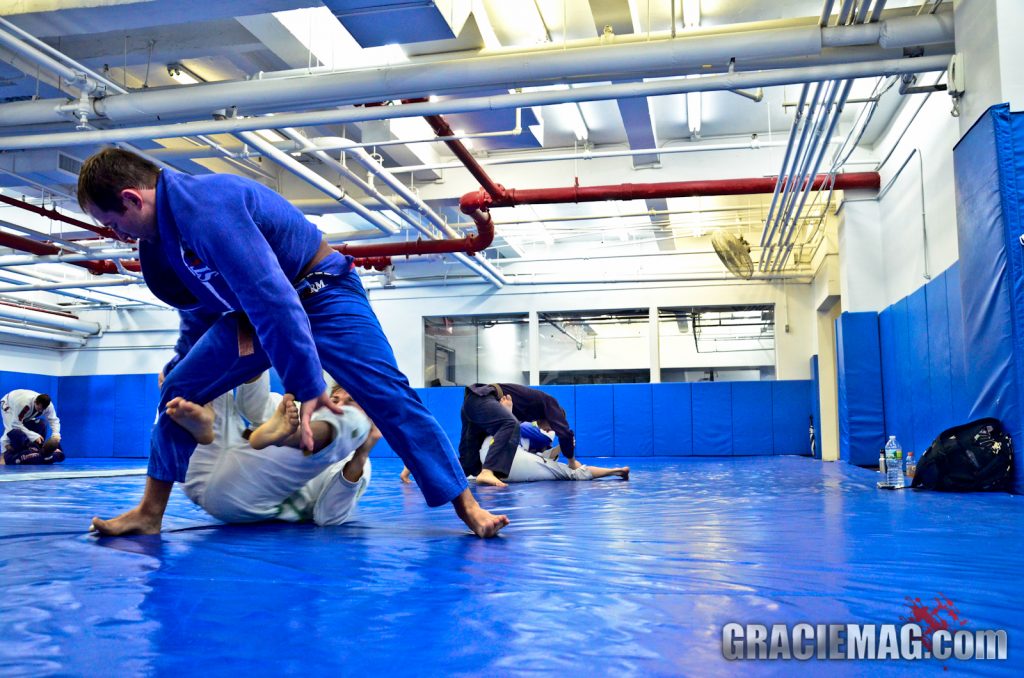
Live sparring with 8-minute matches / Photo by Erin Herle
Include regular rolling into your routine like you would any other class as it can be the best way to apply anything you’re currently working. Also, more mat time is always a good thing. Try to work on what you have drilled and focus on your weaknesses. Remember, there is no ego in the gym and what happens in training stays in training. Don’t be afraid to work on what you need to work so that you can improve in all areas. If you compete, you’ll be more prepared and have more to work with in your muscle memory. Switch partners and have at least four rounds.
Submission-Only Match with 30-Minute Time Limit
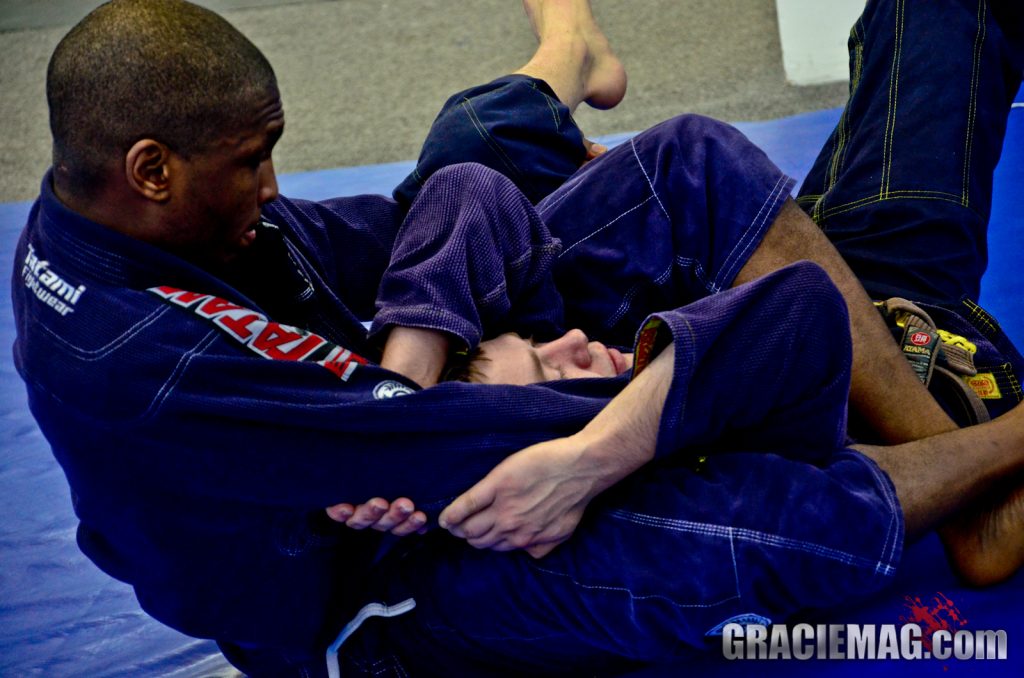
Submission-only matches create submission-oriented people / Photo by Erin Herle
You can save this round for last or have multiple matches in one session. These types of situations, especially when tired after a training session, are great for focusing on finishing an opponent. Focus on gaining dominant positions and attacking. This works the defense and offense. The 30-minute time limit can and will be reached but is a good stopping point should anyone go the length.

Gianni Grippo’s planner with lesson plans and drilling notes.
Remember that these drills are examples. The time limits, the numbers, the details can all be manipulated but are a great jumping off point. A good way to run these classes is to determine a lesson plan before so you can state to everyone involved what the itinerary will be for each class. A planner or designated notebook will be efficient.
And the most important tip for your drilling Jiu-Jitsu classes?
Enjoy yourself!
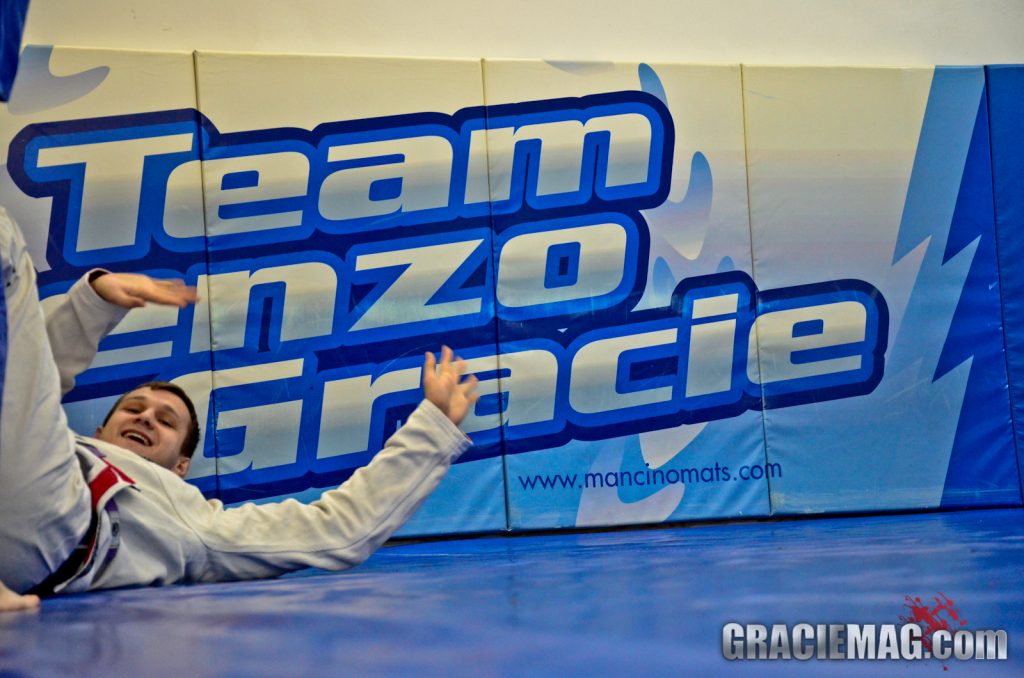
Drilling is fun! / Photo by Erin Herle
